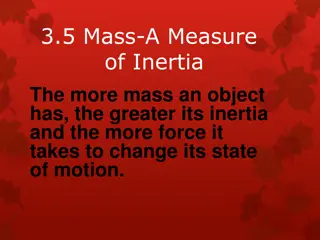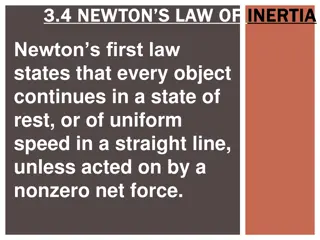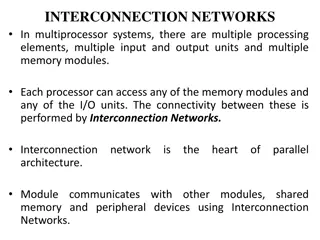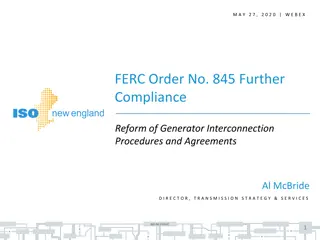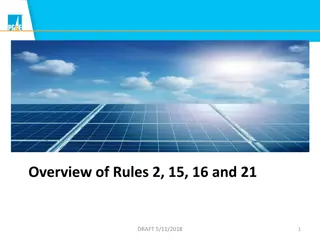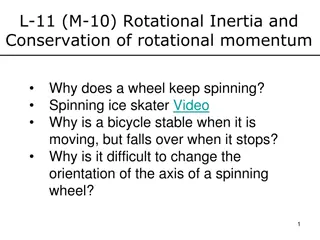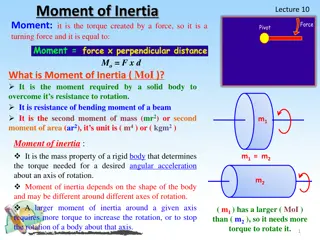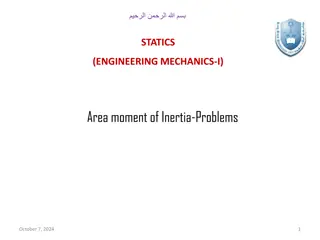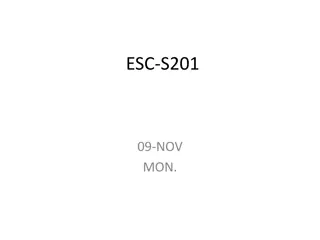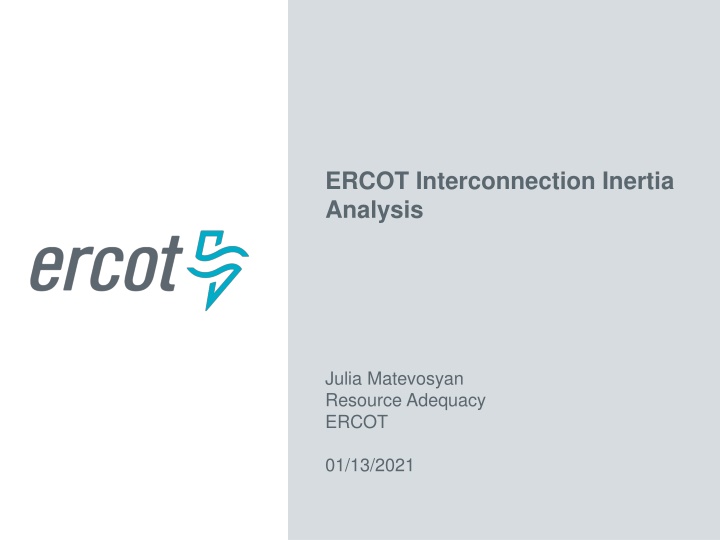
ERCOT Interconnection Inertia Analysis - System Dynamics Overview
In this analysis, the impact of synchronous inertia on system frequency in ERCOT is discussed, highlighting the importance of monitoring and forecasting for maintaining grid stability. Insights into the calculation and monitoring of inertia from 2013 to 2020 provide valuable information on managing grid reliability. Wind generation capacity details and trends in system inertia and net-load are also explored, shedding light on the changing landscape of energy integration.
Uploaded on | 2 Views
Download Presentation

Please find below an Image/Link to download the presentation.
The content on the website is provided AS IS for your information and personal use only. It may not be sold, licensed, or shared on other websites without obtaining consent from the author. If you encounter any issues during the download, it is possible that the publisher has removed the file from their server.
You are allowed to download the files provided on this website for personal or commercial use, subject to the condition that they are used lawfully. All files are the property of their respective owners.
The content on the website is provided AS IS for your information and personal use only. It may not be sold, licensed, or shared on other websites without obtaining consent from the author.
E N D
Presentation Transcript
ERCOT Interconnection Inertia Analysis Julia Matevosyan Resource Adequacy ERCOT 01/13/2021
Effect of Synchronous Inertia on System Frequency With increasing integration of inverter-based generation, there could be periods when total inertia of the system could be low since less synchronous machines will be online. UFLS trigger 2 PUBLIC
Inertia Calculation In 2013, as instantaneous wind power penetration reached 30%, ERCOT started analyzing impacts of inverter-based generation on system inertia. In 2015, ERCOT implemented a real-time inertia calculation using inertia parameters of each individual synchronous generator and its status (on/off) telemetry. ????= ?? ???? ? ? where I is the set of online synchronous generators or condensers, MVAiis MVA base of on-line synchronous generator or synchronous condenser i, and Hiis inertia constant for on-line generator or synchronous condenser i in a system (in seconds on machine MVAi) 3 PUBLIC
Inertia Monitoring in Real-Time and Forecasting In 2016, inertia monitoring was implemented in the control room. 4 PUBLIC
Wind Generation Capacity as of Dec 31st, 2020 MW amounts in blue font are projects that are synchronized with ERCOT grid but not yet approved for commercial operation. +1,261 MW+3,866 MW +2,083 MW+1,999 MW +1,079 MW+148 MW +3,035+7 MW +1,805 MW +3,129 MW +1,629 MW 5 PUBLIC
ERCOT Inertia 2013-2020 2013 3/10 3:00 AM 2014 3/30 3:00 AM 2015 11/25 2:00 AM 2016 4/10 2:00 AM 2017 10/27 4:00 AM 2018 11/03 3:30 AM 2019 3/27 1:00 AM 2020 05/01 2:00 AM Date and Time Min synch. Inertia (GW*s) System load at minimum synch. Inertia (MW) Non-synch. Gen. in % of System Load 132 135 152 143 130 128.8 134.5 131.1 27,831 28,425 28,397 24,726 24,540 27,190 29,883 30,679 47 54 53 31 34 42 50 57 6 PUBLIC
Inertia 2013-2020 (sorted from lowest to highest) Zooming on lower inertia hours 2015 inertia was higher due to low gas price, and low wind (not included here) 7 PUBLIC
Relative Wind Production 2013-2020 (sorted from lowest to highest and zoomed) Actual hourly wind power production is normalized by installed capacity at the time and ordered from lowest to highest level for each year to compare how productive each year was. 9 PUBLIC
Curtailments Curtailment % is calculated based on potential uncurtailed annual energy yield 10 PUBLIC
Natural Gas Prices 12 10 8 Daily Fuel price in $/MmBtu 6 4 2 0 11 PUBLIC
Coal vs Combined Cycle Interplay Combine Cycle Plant Inertia Coal Plant Inertia Combined Cycle Plant has about 1.5 time higher inertia than a Coal Plant with the same MVA rating 12 PUBLIC
Synchronous Generation Retirements, Mothballing and Additions 11600 MW of capacity retired or mothballed (primarily coal and gas-steam), and 9300 MW of capacity was added (primarily CC and CTs) from 2013 through 2020. 13 PUBLIC
PUN Inertia Jan- Nov 14 PUBLIC
Inertia by Unit Type during Minimum Inertia Hour in Each Year 15 PUBLIC
Summary All other factors being constant, inertia would decline in proportion to installed capacity of inverter-based generation; However, ERCOT load is growing, which affects unit commitment and, consequently, inertia trend; Lower natural gas prices result in more Combined Cycle (CC) generation committed and higher overall inertia. If retired Coal generation is replaced by CCs in unit commitment, then inertia increases as well. Private Use Networks generation provide significant portion of system inertia and currently does not respond to energy price variations similarly to other Resources Finally, levels of wind output during low load periods in a given year affects inertia 16 PUBLIC
Thank you! Questions? Julia Matevosyan jmatevosjana@ercot.com PUBLIC
Load Duration Curves (2013-2020) Hourly load is ordered from lowest to highest level for each year to illustrate load growth from 2013 to 2020 18 PUBLIC

